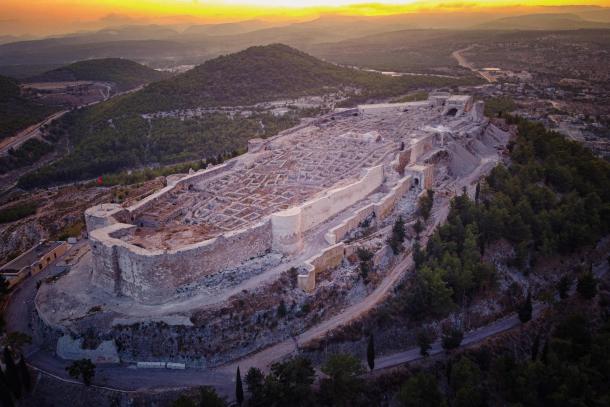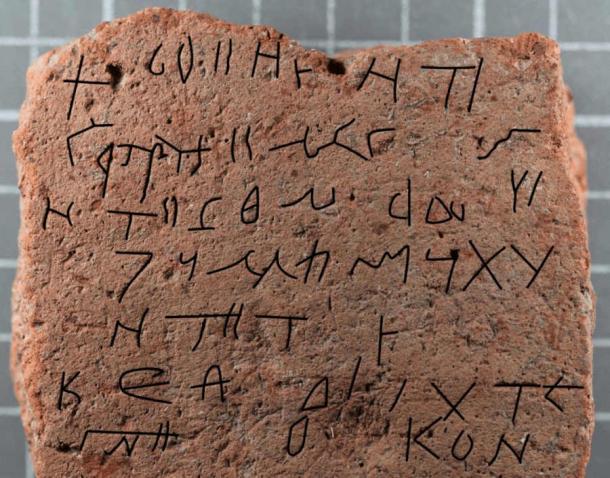🔴 Website 👉 https://u-s-news.com/
Telegram 👉 https://t.me/usnewscom_channel
During ongoing excavations at Silifke Castle, located on a hilltop in the town of Silifke in Mersin Province, southern Türkiye, a mysterious burial tablet believed to date back to the Byzantine period has been unearthed. This “talismanic grave tablet”, containing exquisitely detailed inscriptions, is thought to have been used for protection and safeguarding buildings against evil forces and enemies. The discoveries also feature tear-shaped glass vessels, oil lamps, and ceramics, offering insight into the customs and practices of ancient civilizations.
Ruins of Silifke Castle and valley at sunset. Mersin, Turkey. (Philipp Berezhnoy/Adobe Stock)
Ward off Evil: A Unique Grave Tablet
This finding is part of ongoing excavation and restoration efforts led by the Turkish Ministry of Culture and Tourism. The project, now in its 13th phase, is directed by Professor Ali Boran of Ankara Haci Bayram Veli University, reports Arkeonews.
“The tablet’s inscriptions suggest it was designed to protect against all forms of malevolence and enemies,” Boran explained. “Its complete analysis is ongoing with our epigraphy experts, but it already indicates that this site was not merely a city but had diverse attributes.”
Boran noted that the tablet, found to the west of the mosque, is small in size but contains highly informative inscriptions. He explained that, much like the modern belief in the protective power of a “nazar boncuğu,” similar items have been used since ancient times to ward off harm.
The discovery of this tablet at Silifke Castle, he emphasized, provides important historical insight. No grave structure has been discovered inside the castle so far, but the tablet suggests that such a structure existed in the past. He indicated that the tablet holds significant historical importance for the region and Anatolia, as it provides valuable data.
Talisman believed to have been made during the Byzantine period to protect the building or tomb from evil. (Anadolu Agency)
Silifke Castle: A Long-Drawn Out Battle Against the Arabs
The discovery, made at the 185-meter-high castle, adds a new dimension to the historical understanding of the region. Silifke Castle, a Byzantine fortress featuring a moat, two dozen towers, and vaulted underground chambers, once served as the command center of the town.
Originally constructed during the 7th-century Arab raids, the current structure dates from approximately 500 years later, reports Turkiye Today.
The castle holds significant historical value due to its strategic location overlooking the Göksu River and the surrounding plains. Originally built by the Byzantines, this fortress played a vital role in defending the region against invasions, particularly during the Arab raids of the 7th century.
Although the initial construction dates back to the Byzantine period, much of the existing structure is from later periods, with significant renovations and additions made during the medieval era, likely around the 12th and 13th centuries.
The fortress has a well-preserved defense system, including a moat, several gates, two dozen towers, and underground chambers. Its design reflects the military architecture of its time, aimed at repelling invaders and controlling the surrounding area.
Over the centuries, Silifke Castle was also occupied by the Crusaders, Seljuks, and Ottomans, each adding their architectural touch to the fortress. The blend of these influences can be seen in the castle’s design and layout, making it an important historical site for multiple civilizations.
The Arab-Byzantine conflicts began in the 7th century as part of a broader expansion of the early Islamic Caliphates, targeting the Byzantine Empire’s territories in the Eastern Mediterranean.
Following the rise of Islam and the establishment of the Rashidun Caliphate, Arab forces launched raids and campaigns into Byzantine-held lands, particularly in Anatolia, Syria, and North Africa. The Byzantine Empire, weakened by wars with the Sassanid Persians and internal strife, struggled to defend its eastern provinces.
These invasions forced the Byzantines to fortify key strategic locations, including castles and fortresses, to protect their territory. One of these critical sites was Silifke Castle, which held a key position along the Göksu River in southern Anatolia, providing a defense against incursions from the south.
Silifke Castle, built during this tumultuous period, became a central defensive stronghold for the Byzantine Empire in the region. Initially constructed to repel Arab raids, the fortress was strategically located to oversee important trade routes and protect nearby settlements.
Top image: Talisman believed to have been made during the Byzantine period to protect the building or tomb from evil. Source: Anadolu Agency
By Sahir Pandey


